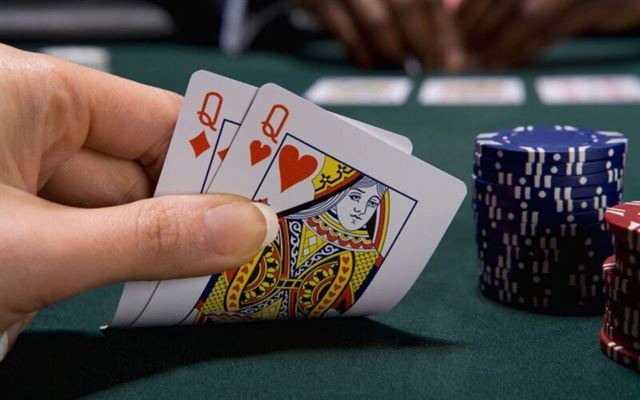Building a bankroll in poker is a crucial step towards becoming a successful player. It involves starting with a small amount of money and gradually increasing it through strategic play and disciplined bankroll management. By following certain guidelines and employing effective strategies, players can maximize their chances of winning big in poker. In this article, we will explore the key principles and techniques for bankroll building, providing valuable insights for aspiring poker players.
The Importance of Bankroll Management in Poker
Bankroll management is the practice of carefully managing your poker funds to ensure that you can weather the ups and downs of the game. It’s a crucial aspect of poker that is often overlooked by beginners, but it can make all the difference between success and failure.
One of the first things to understand about bankroll management is the concept of variance. Variance refers to the natural fluctuations in poker results that are caused by luck. Even the best players in the world can experience losing streaks, and it’s important to be prepared for these inevitable swings.
To manage your bankroll effectively, it’s recommended to have a certain number of buy-ins set aside for each level of play. The exact number of buy-ins will depend on your risk tolerance and the specific game you’re playing, but a general rule of thumb is to have at least 20 buy-ins for cash games and 50 buy-ins for tournaments.
By having a sufficient bankroll, you can minimize the risk of going broke during a downswing. It allows you to continue playing without having to constantly reload your account, which can be both financially and emotionally draining.
Another important aspect of bankroll management is knowing when to move up or down in stakes. As your skills improve and your bankroll grows, you may be tempted to move up to higher stakes games. While this can be exciting, it’s important to be cautious and not jump too quickly.
Moving up in stakes should be done gradually and only when you have a comfortable cushion in your bankroll. A good rule of thumb is to have at least 30 buy-ins for the next level before making the move. This ensures that you have enough funds to withstand the increased variance that comes with playing at higher stakes.
On the other hand, if you’re experiencing a prolonged losing streak or your bankroll has taken a hit, it may be necessary to move down in stakes. This can be a tough decision to make, as it can feel like a step back. However, it’s a necessary step to protect your bankroll and give yourself a chance to rebuild.
In addition to managing your bankroll, it’s also important to set realistic goals and expectations. Poker is a game of skill, but it’s also a game of chance. Even the best players in the world can experience losing sessions or even losing months. It’s important to understand that poker is a long-term game and that short-term results are not always indicative of skill.
By setting realistic goals and focusing on the process rather than the outcome, you can maintain a healthy mindset and avoid the emotional rollercoaster that often comes with poker. Remember, it’s not about winning every hand or every session, but about making the best decisions possible and continuously improving your skills.
Strategies for Building a Bankroll in Poker
The first step in building a bankroll is to set a budget. Determine how much money you are willing to invest in your poker playing and stick to that amount. It is important to remember that poker is a game of ups and downs, and there will be times when you experience losses. By setting a budget, you can ensure that you do not spend more money than you can afford to lose.
Once you have set a budget, the next step is to choose the right game. It is important to start small and play at stakes that are appropriate for your bankroll. Playing at stakes that are too high can quickly deplete your bankroll, while playing at stakes that are too low may not provide enough of a challenge to help you improve your skills. Finding the right balance is key.
In addition to choosing the right game, it is also important to manage your bankroll effectively. This means being disciplined and not playing with more money than you have set aside. It can be tempting to chase losses or play at higher stakes when you are on a winning streak, but this can quickly lead to disaster. Stick to your budget and resist the urge to take unnecessary risks.
Another strategy for building a bankroll in poker is to take advantage of bonuses and promotions. Many online poker sites offer bonuses to new players, such as deposit matches or free tournament entries. By taking advantage of these offers, you can increase your bankroll without having to invest additional money. However, it is important to read the terms and conditions of these promotions carefully to ensure that you understand the requirements for withdrawing any bonus funds.
Furthermore, it is crucial to continually improve your poker skills. The more you learn and practice, the better your chances of winning. Take advantage of resources such as books, online tutorials, and poker forums to expand your knowledge and learn new strategies. Additionally, consider joining a poker training site or hiring a coach to help you refine your skills. Investing in your education can pay off in the long run.
Lastly, it is important to have patience and a long-term mindset when building a bankroll in poker. Rome wasn’t built in a day, and neither will your bankroll. It takes time and dedication to grow your poker skills and increase your bankroll. Set realistic goals and celebrate small victories along the way. Remember that poker is a marathon, not a sprint.
Tips for Starting Small and Winning Big in Poker
One of the first things to consider when starting small in poker is your bankroll management. It is crucial to set aside a specific amount of money that you are willing to invest in the game. This will help you avoid the temptation of spending more than you can afford and protect you from potential financial ruin. A general rule of thumb is to have at least 20 buy-ins for the stakes you are playing. For example, if you are playing $1/$2 no-limit hold’em, you should have a bankroll of at least $4,000.
Once you have established your bankroll, it is important to choose the right game for your skill level. Starting at lower stakes will allow you to gain experience and confidence without risking too much of your bankroll. It is better to be a big fish in a small pond than a small fish in a big pond. As you become more comfortable and successful at the lower stakes, you can gradually move up to higher stakes games.
Another tip for starting small and winning big in poker is to focus on your game selection. Not all poker games are created equal, and some are more profitable than others. Look for games with weaker opponents and higher potential for profit. This may mean avoiding popular online poker sites and seeking out smaller, less-known platforms where the competition may be softer.
In addition to game selection, it is important to study and improve your poker skills. Poker is a game of skill, and the more you learn, the better your chances of winning. There are numerous resources available, such as books, online courses, and poker forums, that can help you improve your game. Take advantage of these resources and dedicate time to studying and practicing your skills.
Furthermore, it is crucial to develop a solid strategy and stick to it. This means understanding the fundamentals of poker, such as hand rankings, pot odds, and position. It also means being disciplined and not letting emotions dictate your decisions. Poker can be a rollercoaster of emotions, but successful players are able to stay calm and make rational decisions based on their strategy.
Lastly, it is important to have realistic expectations when starting small in poker. While it is possible to win big, it is also important to understand that poker is a long-term game. There will be ups and downs, and it is important to stay focused and patient. Avoid chasing losses and be prepared for variance. Building a bankroll takes time and effort, but with the right approach and mindset, it is possible to start small and win big in poker.
Maximizing Profits: Bankroll Building Techniques in Poker
First and foremost, it is crucial to set a budget for your poker bankroll. Determine how much money you are willing to invest in the game and stick to that amount. This will prevent you from overspending and potentially getting into financial trouble. Remember, poker is a game of skill and luck, and there will always be ups and downs. Setting a budget ensures that you are prepared for any losses that may occur.
Once you have set your budget, it is time to start building your bankroll. One effective technique is to start small and gradually increase your stakes as you gain more experience and confidence. This allows you to minimize your risk while still having the opportunity to win big. Starting at lower stakes also gives you the chance to learn the game and develop your skills without risking too much of your bankroll.
Another important aspect of bankroll building is proper bankroll management. This means only risking a small percentage of your bankroll on each individual game or tournament. A common rule of thumb is to never risk more than 5% of your bankroll on a single game. This ensures that even if you have a string of bad luck, you will still have enough money left to continue playing and potentially turn things around.
In addition to managing your bankroll, it is also important to take advantage of bonuses and promotions offered by online poker sites. Many sites offer welcome bonuses or deposit matches, which can significantly boost your bankroll. By taking advantage of these offers, you can start with a larger bankroll and increase your chances of winning big.
Furthermore, it is essential to constantly evaluate and adjust your bankroll building strategy. As you gain more experience and improve your skills, you may find that you are ready to move up to higher stakes. However, it is important to be cautious and not jump into higher stakes too quickly. Gradually increasing your stakes allows you to adapt to the higher level of play and minimize the risk of losing a significant portion of your bankroll.
Lastly, it is crucial to stay disciplined and avoid chasing losses. Losing is a natural part of poker, and it is important to accept that you will have both winning and losing sessions. Chasing losses by increasing your bets or playing for longer periods of time can be detrimental to your bankroll. Instead, take breaks when needed and always stick to your predetermined bankroll management strategy.
In conclusion, bankroll building is a crucial aspect of poker that can greatly impact your overall success in the game. By setting a budget, starting small, managing your bankroll effectively, taking advantage of bonuses, and staying disciplined, you can maximize your profits and increase your chances of winning big. Remember, poker is a long-term game, and building a solid bankroll takes time and patience. So start small, stay focused, and enjoy the journey towards becoming a successful poker player.






